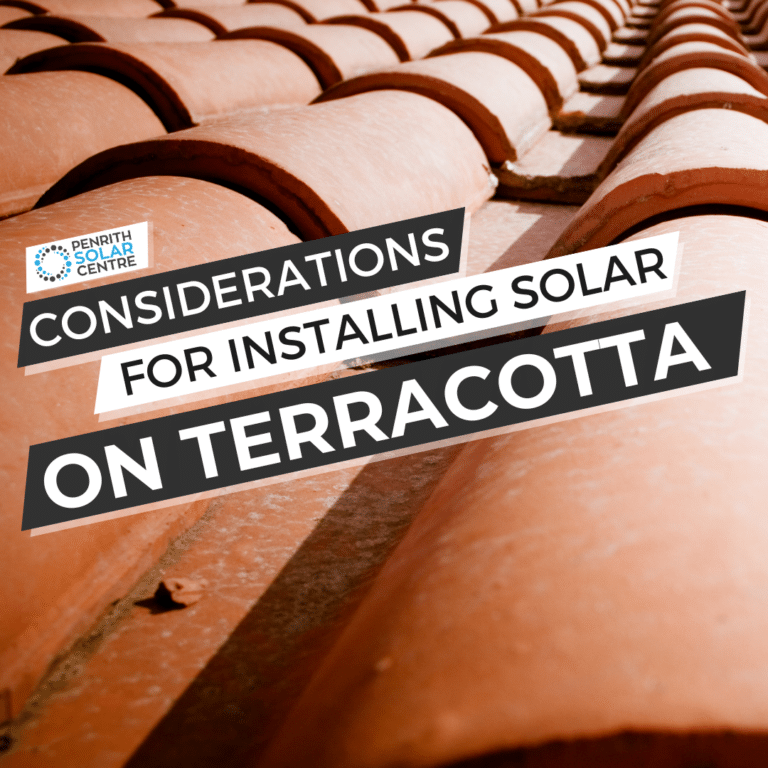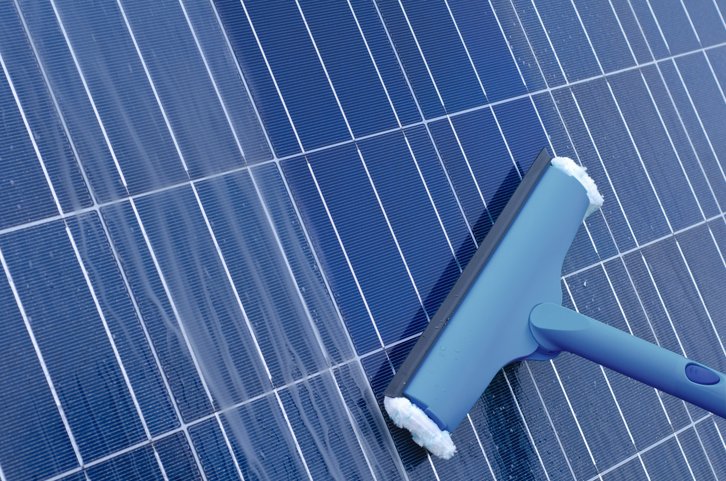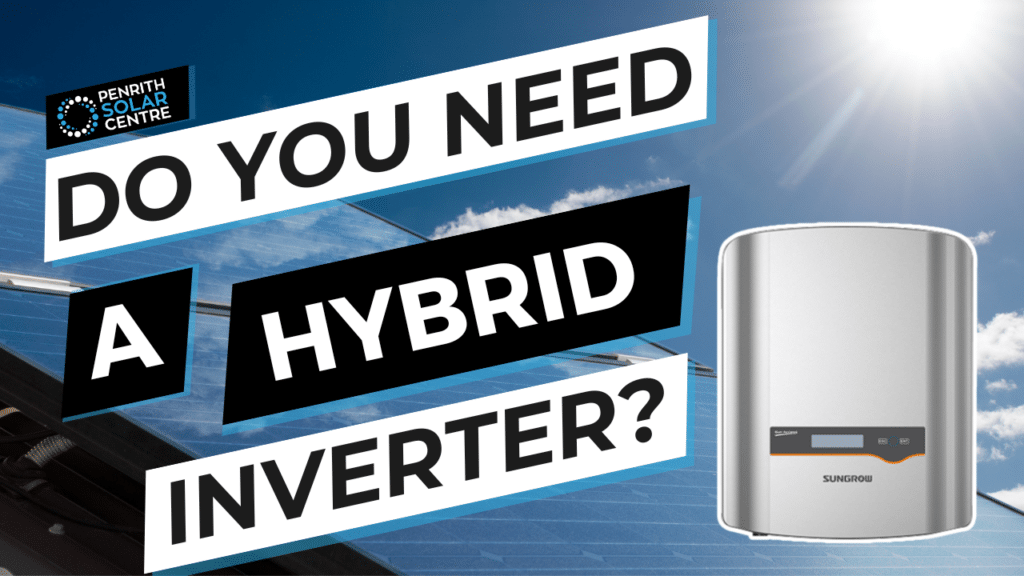
On your solar journey, especially if you’re well on your way in your research about systems, you’ve probably discovered that the type of inverter you invest in is way more important than the type of solar panels you’re looking at (and if a sales consultant is telling you otherwise, you’re dealing with a newbie or a twit).
Deciding on an inverter type will influence every other decision you make around your solar system. There are three types of inverters: the central string inverter, the hybrid string inverter, and the microinverter. And let’s not forget that there are batteries with inverters within their system as well. It’s a lot to wrap your head around.
At Penrith Solar Centre, we’ve been wrapping our heads around issues of inverters for years. We do it every day. And we’re here to help you understand everything you need to know about solar, so you can make the best choices for yourself and your home.
In this article, you will learn:
- What is a Hybrid Inverter?
- Battery Storage and Inverters: What You Need to Know
- Do You Need a Hybrid Inverter to Connect a Battery?
- The Microinverter Alternative
By the end of this article, you’ll know whether or not a hybrid inverter is a necessary investment for your solar system.
What is a Hybrid Inverter?
Solar panels – at this moment in the history of science and technology – are only capable of producing direct current (DC) power, and your home and the grid utilise alternating current (AC) power. That’s just the way it is.
An inverter, whether it’s central, hybrid, or microinverter, is responsible for converting DC power harvested by the solar panels into AC power for the home to use.
The hybrid inverter was developed and manufactured to solve an issue of incompatibility between central inverters and solar batteries. An AC-coupled solar battery (like the Enphase IQ Battery 5P or the Tesla Powerwall 2) will have an inverter in it that converts the AC power it’s receiving back into DC power for storage, so there’s no reason to install a hybrid inverter.
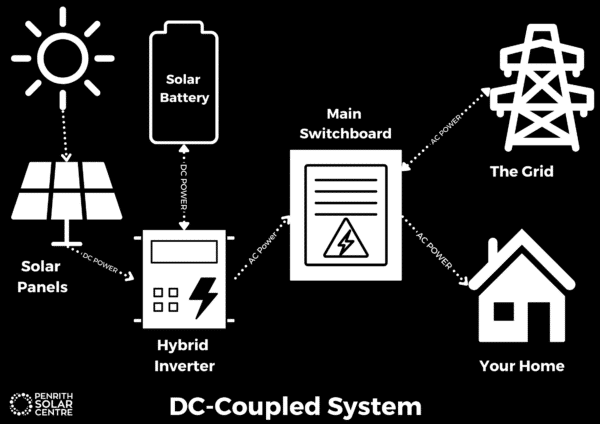
It’s a little different if you have a central inverter and you want to have a DC-coupled battery. The inverter cannot communicate with it. It’s only able to convert the DC power from the roof into AC power for the home to use. It can’t send AC power to a battery without it being converted into DC power.
The hybrid inverter combines central and battery inverters into one unit, allowing excess solar energy to be stored in batteries for later use. It can operate in different modes, including battery backup mode for power outages.
To provide backup power, household switchboards may need modification, adding to installation costs.
They also direct traffic for your solar system by controlling the flow of electricity between panels, batteries, and the grid for optimal efficiency.
Hybrid solar inverters come with advanced features like Wi-Fi connectivity and smartphone apps, allowing users to monitor energy production and battery status in real time. This helps them make informed decisions about energy usage and optimise their solar energy system’s performance. This is called consumption monitoring (energy use monitoring) and it’s useful in determining how to use your solar system in response to your energy habits.
Now when you hear all of that, a hybrid inverter sounds pretty good.
If you’re interested in learning more about consumption monitoring, you might want to check out the following article titled, What is Consumption Monitoring?
Battery Storage and Inverters: What You Need to Know
Each household installing a battery storage system requires an inverter to convert stored DC electricity into usable AC electricity for the grid and appliances, and then, in order to convert the DC energy stored in the battery back to AC power again, another inverter is needed. The options include battery-specific inverters and hybrid inverters. What are the advantages and disadvantages of each type of energy storage system?

Standard String Inverters:
A solar system inverter’s job is to change the DC power from solar panels into AC power. While different brands may offer extra features, this conversion is essential for them to be considered inverters. In Australia, there are many brands available, such as SMA, Fronius, and ABB/Power-One.
Pros:
- String inverters have been popular for a while now with multiple installers across Australia who know how to install and service.
- It’s not just a lot of options for service, it’s a lot of options for products as well.
- String inverters are incredibly popular because they are cheap.
Cons:
- Your system will need an inverter upgrade if you want to add a DC-coupled solar battery because a standard string inverter is incompatible with that technology.
- The monitoring functions are very ineffective because a string system cannot provide panel-level performance information (unless you invest in optimisers).
Hybrid Inverters:
In residential solar with battery storage setups, a hybrid inverter, can handle power from both solar panels and a battery because it can convert DC power to AC power and back again. It sends electricity to charge batteries using solar panels or the grid, depending on how you program your inverter to function.
Pros:
- Considered an all-in-one inverter solution for grid-connected systems with DC-coupled solar battery.
- Can be installed without batteries for “futureproofing.” Of course, this futureproofing only applies to DC-coupled batteries.
Cons:
- They are central inverters that can convert power in two different directions, yes, absolutely. Unfortunately, they are limited by being a component in a string system, and string systems have all the problems we mentioned earlier.
- Less efficient than dedicated solar-only or battery-only inverters. There is some energy loss in converting DC power to AC power and back to DC power again.
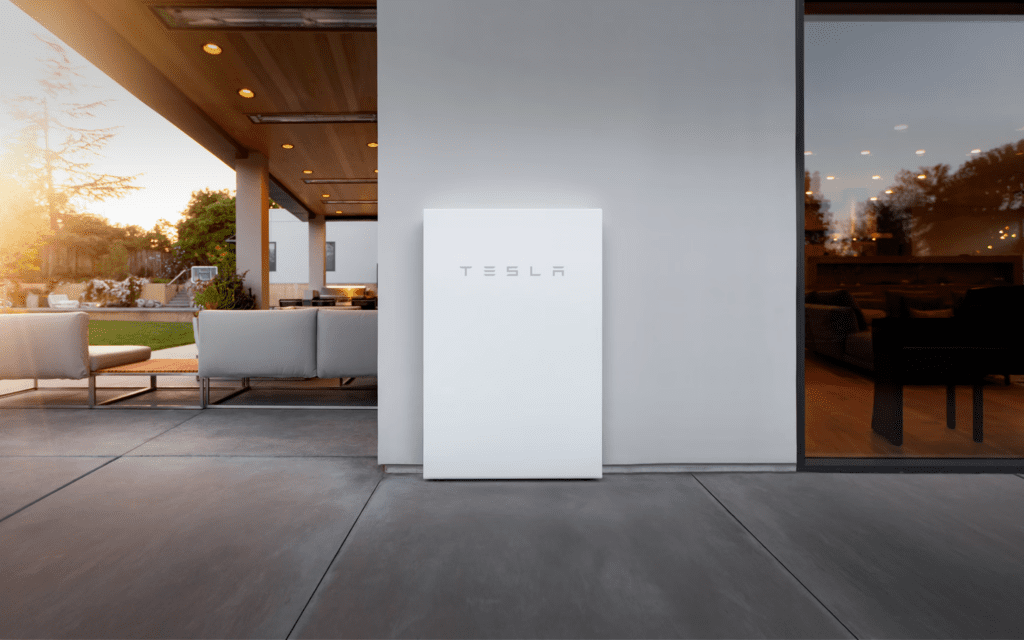
Battery Inverters:
Battery inverters (which are contained within the housing of your AC-coupled solar battery) control how batteries charge and discharge. Like regular inverters, they convert DC to AC electricity, but they will also convert AC back to DC to charge batteries and again convert DC power back to AC power when the battery is discharged.
These inverters can be added to homes without solar panels to manage energy use, like charging batteries with cheaper off-peak electricity and selling it back to the grid when it’s most profitable. Solar batteries with inverters included are designed to fit onto existing solar systems without much trouble due to their modular design.
Pros:
- A battery with a built-in inverter offers greater system design flexibility.
- They are easily added onto existing solar systems for additional battery storage.
Cons:
- There are a few cons to an AC-coupled battery with a built-in inverter. However (on rare occasions), if the solar battery with a built-in inverter has only one built-in inverter (like the Tesla Powerwall 2) and that inverter fails, then you’d need to replace the entire battery. This does not happen often, but when it does happen, comprehensive warranties from manufacturers fulfilled by your in-house installer make sure the damaged equipment is replaced as swiftly as possible.
If you’re interested in learning more about the differences between in-house installers and working with subcontractors, you might want to check out the following article titled, In-house Installers vs. Subcontractors: Which is Better?
Do You Need a Hybrid Inverter to Connect a Battery?
Hybrid solar inverters are marketed as a truly “battery-ready” inverter. What does it mean for an inverter to be “battery ready?”
A lot of Sydney residents investing in solar are interested in solar batteries, but the upfront expense and extended payback period make homeowners cautious. Some are waiting for the cost of solar batteries to drop, or if the Australian federal government decides to create an incentive for solar batteries the same way they created the STC scheme for solar. Of course, neither of these things has happened (and probably won’t).
If you hear the phrase “battery ready,” you might think that a hybrid inverter is what you want to install if you want to add a battery later. After all, that’s what the phrase seems to mean when used to sell hybrid inverters.
Hybrid inverters are technically “battery ready” in that you can install a solar battery to them later. Probably. Possibly. Honestly, you might not be able to do that.
This is where the truth about hybrid inverters starts to get sticky.
You don’t need a hybrid inverter for an AC-coupled battery system. You can retrofit batteries to any existing solar system regardless of what inverter you have. You’ll just have to use an AC-coupled battery like the Tesla Powerwall 2.
Hybrid inverters solve the problem of attaching a battery to a solar system that uses DC-coupling. But they still have limitations. They only work with some batteries, and that equipment might not be available when you want to buy it later. They’re also more expensive than regular inverters.
Here with a few words on hybrid inverters is our founder, CEO, and Director of Penrith Solar Centre, Jake Warner:

They say you can buy a hybrid inverter at any time and just go bolt a battery on it magically – as if that’s how it works. The reality could not be further from the truth. No matter what any salesperson says, it’s difficult to future-proof a solar system [future-proof in this context means technology remaining compatible years from now].
For example, SolarEdge manufactured an RWS model hybrid inverter that was compatible with the Tesla Powerwall 1. LG Chem offered equipment that did the same. If you purchased either of those inverters back in the day and thought that in five years you could bolt a battery onto them, you’d be significantly disappointed right now. Like really disappointed. There are no batteries compatible with those inverters today.
My opinion is: if you’re going to spend an extra $1,000 or whatever they’re marking up these things as just purchase the battery right away. You know it will be compatible with your solar system.
No matter what anyone says, even us, it’s impossible to “future-proof” your solar system. No one can guarantee backwards compatibility. Even the Tesla Powerwall 3 is not backward compatible with the Powerwall 2, and Tesla is producing one of the most advanced battery systems in the world.
I say, do it once and do it right.
However, if you do want to install them separately, you’ll need an AC-coupled battery solution.
For example, we install Enphase solar systems. It’s very easy for someone to come back later and bolt on a Tesla Powerwall 2.
If the client has an Enphase system and wants Enphase batteries down the road, they’ll need to replace the iBoard with an IQ Controller. Some clients think it’s a great idea to install the IQ Controller instead of the iBoard to be future-proof, which is a terrible idea because that IQ Controller might not even be compatible with Enphase batteries five years from now. Don’t spend a ton of money on anything to “future-proof” it or be “battery ready” or anything else along those lines.
Sometimes technology simply evolves, like Apple changing the plugs for USB and charging cables on their MacBook laptops.
When you’re ready to invest in batteries, then go in full hog and do it right. Half measures will end up costing significantly more.
The Microinverter Alternative
We write extensively about microinverters for many reasons. We believe in them, and we sell them. Actually, those are the only reasons we write about them. Anyway!
As we mentioned earlier in the article (but you may have forgotten because that was a long time ago, wasn’t it?), microinverters have one purpose in a solar system: converting the power your panels produce into usable electricity for the home. They are small devices that are mounted underneath each solar panel on a solar system. Each one works independently but together they are a powerful team.
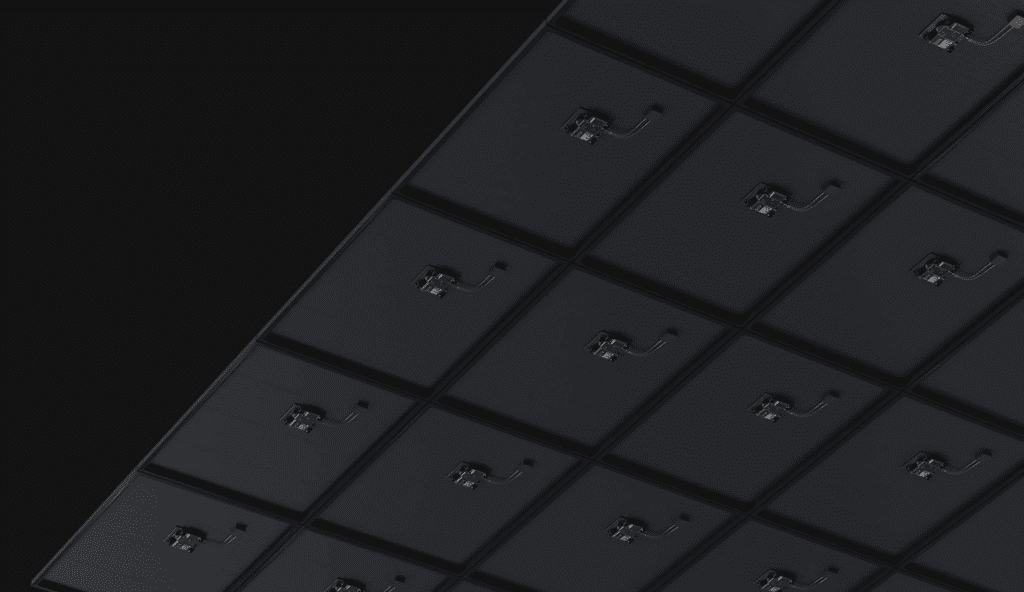
They’re great for troubleshooting shading issues, they’re efficient in extreme heat or cold, they save you more money long-term, and they generally require little to no maintenance.
If you purchased a solar system from an in-house installer like Penrith Solar Centre, they work with the manufacturer (in this case, Enphase) to fulfil warranties and make sure the system continues working.
The biggest advantage of a microinverter solar system is something we mentioned earlier called consumption monitoring (keeping track of your energy usage patterns). You can access it from an app and use it to monitor and adjust your solar production. Much like the features of a hybrid inverter, a microinverter system can make informed decisions about your solar and how to use it. However, a microinverter solar system can give you panel-level information in addition to how the entire system operates.
A string solar system with a hybrid inverter is still a string solar system. It is limited by the same science and technology inherent within that type of product.
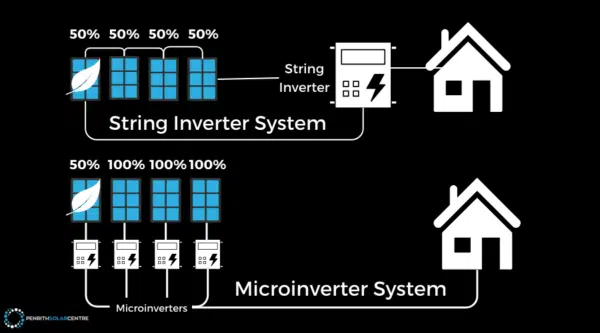
But we’re here to talk about hybrid inverters, which were designed to help solar systems work more efficiently with solar batteries.
Because microinverters convert the DC power harvested from solar panels to AC power immediately, the solar system is easily compatible with AC-coupled batteries.
If you’re interested in learning more about microinverter solar systems and how they are different from string inverter systems, you might want to check out the following article titled, Microinverters vs. String Inverters: An Honest Comparison.
Hybrid Inverters: Wire You Spending Money on Them?
Now you know the ins and outs of hybrid inverters. Sometimes we get equipment in the solar industry that’s meant to solve a problem, but because the industry is evolving in leaps and bounds, newer technology will eclipse older equipment and methods. As AC-coupled batteries continue to rise in prominence, DC-coupled solutions like hybrid inverters are fading into the background.
At Penrith Solar Centre, we want you to be informed so you’ll be happy with your solar system. A happy solar enthusiast knows what they need to spend money on and what they don’t need to invest in. There are a variety of options and solutions to every possible difficulty a solar installation might encounter.
Just because we have a bias against hybrid inverters doesn’t mean they won’t be a good fit for your solar system. But make sure you are fully educated on what they can do for you before you pull the trigger on upgrading your inverter.
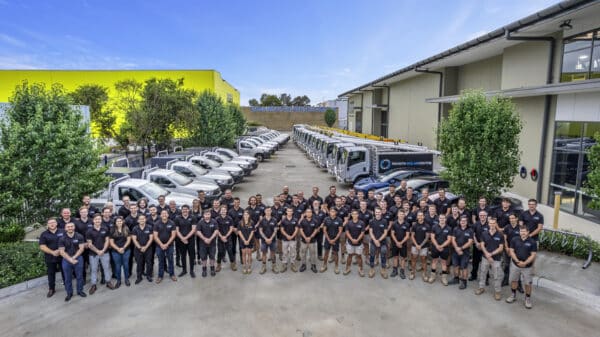
If you’re interested in learning more about solar batteries, you might want to check out the following article titled, 6 Best Solar Batteries on the Market.

